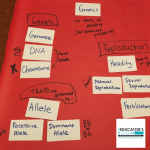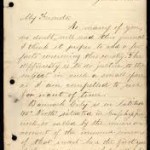Overview:
This social studies teacher focuses on using History Classes to teach writing.
By Rhonda van Bergen
In many elementary classrooms today, literacy has taken center stage as new standards in reading and writing are implemented. Teachers spend significant time teaching English Language Arts (ELA) skills and strategies to prepare students for high-stakes testing in those areas. Unfortunately, content area instruction in science and social studies often takes a back seat to reading, writing, and math requirements. Education Week reports that in a 2018 survey, teachers spent an average of 89 minutes daily on reading and writing but roughly fifteen minutes in social studies instruction. Furthermore, students in elementary classrooms who receive special education services are frequently pulled out of social studies instruction to meet remedial instruction in reading or math.
What if teachers utilized social studies topics during writing instruction? How could integrating these subjects help students learn and apply writing skills? Not only would students gain knowledge using writing-to-learn activities, but they would also strengthen students’ abilities in expository, argumentative, and narrative writing. These purposes for writing are present in the Common Core State Standards, and students must have multiple practices from kindergarten to twelfth grade.
The Real Benefits of Research of Writing in Social Studies
I would have to guess that most elementary students have completed a research report on one of the United States. In fifth grade, I did mine about Nevada; looking back, I have no idea why I chose that state. I had never desired to go there, and no one I knew lived there. I remember the quarter-inch plywood report cover, cut in the exact shape of Nevada, that my dad helped me create using his gigantic bandsaw in the basement. I was so proud of that report. Each page was packed with facts about this mysterious state I had never ventured far enough west to visit.
Writing research reports logically connects social studies learning for all grades. My fourth-grade students complete a state research report and are graded on their writing ability for ELA and their facts and research in Social Studies. This way, I can increase my social studies instruction time by making a state the focus of the required research paper in writing. However, reports are not the only writing activities that can strengthen social studies concepts.
Top Five Writing Activities
A 2021 survey of 150 elementary teachers showed that the top five writing activities, in addition to reports, were: descriptive paragraphs, notetaking while reading, compare/contrast examination of text, and short answer questions on assessments. Students must be given many opportunities to interact and write about source material. As Michael Herbert asserts, “Objectives of writing lessons may include teaching students to identify and record information, to reorganize ideas, to analyze ideas, to make interpretations, to synthesize ideas, or to inform others.” Taking notes and writing summaries using textbooks and primary and secondary sources in social studies are crucial to understanding historical events and learning about the world in which we live.
Veronica Zagora, a high school teacher in St. Louis, was frustrated with the poor effort in short-answer assessment responses from students in her tenth-grade U.S. government classes. She set out to improve this by integrating more daily writing activities, including summaries, exit slips, short essays, and a state voter handbook assignment given in place of a unit exam. She used an English class rubric to evaluate writing, and students became more used to writing in her class. After this shift, she observed increased buy-in from her classes, and students could see a greater purpose in their writing activities.
Accept All Arguments in Social Studies
Every student I encounter has an opinion; some express it more than others! Writing about opinions is a critical 21st-century skill students can practice in social studies. Instead of spoon-feeding the content to students, make them investigative reporters seeking out both sides of the story! Guide them in the search for the truth about historical events such as reasons for going to war, development of cities and industry, social justice topics, and decisions made by local government. The ideas are endless, and students need a critical eye when evaluating the text and sources they explore.
Ben Alvord, a Social Studies teacher in Utah, says it best in Education Week:
My fourth-grade students were studying the Southwest region of the United States. I curated a text set containing videos and age-appropriate news articles from kids’ magazines dealing with the Colorado River water shortage and its impact on the many states that use this valuable resource. The students were asked to read and examine each source and propose a solution for the water crisis. They wrote their opinion as a group, and each person was asked to present why they felt this was a viable solution and what challenges might arise. Not only was this a persuasive writing activity, but students also used their knowledge of the geography and resources in the Southwest U.S. and the current issues surrounding this region to meet this writing standard.
A Nod to Narratives in Social Studies
One of the simplest types of writing for students is a narrative, and there are so many ways teachers can incorporate this style into social studies units. My students complete an interactive journal while they study each region of the United States. They compose stories about life on a Midwest farm in 1800, 1900, and today. They immerse themselves in the thirteen colonies and create accounts of villages and towns built all along the east coast. Students recount tales of the journey along the Underground Railroad as the characters they write experience each stop.
Narratives such as the “I Survived” book series by Lauren Tarshis, are a great example of writing about historical events and times to experience them more deeply. As students dive into the setting of the period they are studying, they can add the plot, climax, resolution, and theme and develop their characters to experience the event. Additionally, as Carol Booth Olson and Lauren Godfrey contend, “Narratives humanize; they promote empathy and insight into the lives of those whose backgrounds and experiences may be vastly different from our own and, at the same time, they encourage self-discovery and the realization of the individual potential residing within each of us.”
With increased literacy standards added, teachers will ultimately need to cut other areas of instruction to meet them. Why not integrate writing skills in history and geography classes to preserve critical learning in social studies? Writing to inform, persuade, and tell a story are all essential skills for 21st-century students. They will need these critical skills to become future community and world members.

Rhonda van Bergen is a fourth grade teacher at Scenic Heights Elementary in Minnetonka, Minnesota. She is currently attending Concordia University St. Paul to obtain a Masters in Literacy Education degree.





